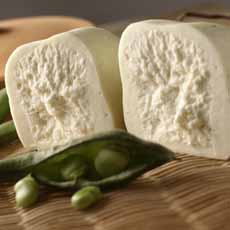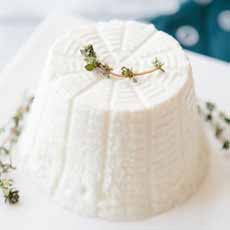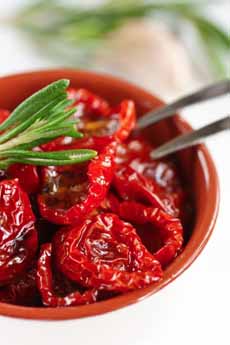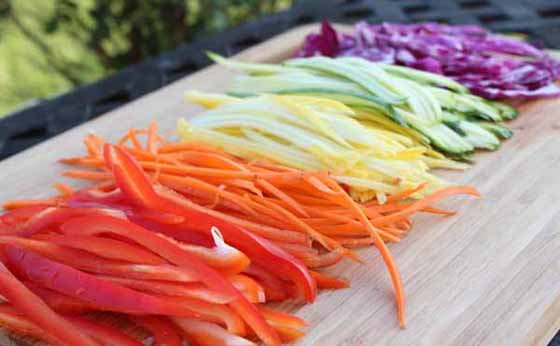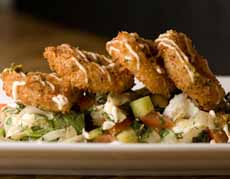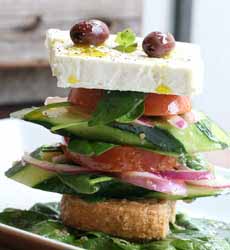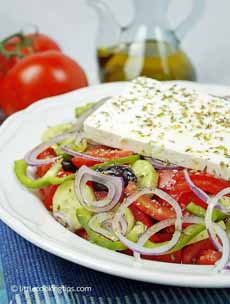
[1] The real deal: an authentic Greek salad from Little Cooking Tips. Here’s the recipe.
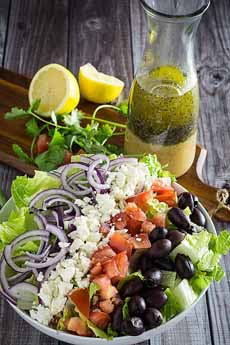
[2] We love how Dishing Delish has arranged the Greek salad ingredients like a Cobb salad. Here’s her recipe for the Best Greek Salad Dressing.
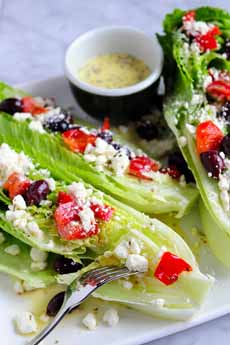
[3] We also love this deconstructed Greek salad: an appetizer on a romaine wedge. Here’s the recipe from DeLallo.
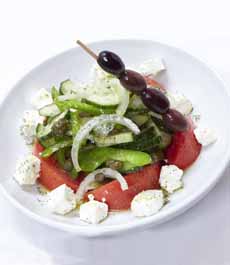
[4] All the ingredients of an authentic Greek salad, with some creativity in assembly, from Stix | NY.
|
|
Our favorite luncheon salad is a Greek salad, most often homemade, sometimes at a diner or similar casual spot.
We follow the latter’s recipe: romaine, tomatoes, feta cheese, cucumber, green bell pepper, red onion, kalamata olives, peperoncini (the italian spelling; pepperoncini is the English spelling), and hopefully, a couple of grape leaves and pita or crusty bread on the side. For seasoning, a sprinkle of oregano and cruets of oil and red wine vinegar.
We’ve been known to substitute balsamic vinegar for the conventional acidic red wine vinegar, and add fresh basil or other herb when we have it.
We especially love a Greek salad in the summer, when the seasonal tomatoes are a joy in of themselves.
THE AUTHENTIC GREEK SALAD
Bloggers Mirella and Panos of Little Cooking Tips says: “The authentic horiatiki [Greek salad] is a very specific salad, with very specific ingredients. See the recipe below, from Chef Amanda Cohen.
The Authentic Greek Salad Ingredients
Tomatoes (not cherry tomatoes; whole tomatoes, cut in wedges)
Cucumbers (peeled and sliced)
Red onions (thinly sliced)
Green bell peppers (thinly sliced)
Kalamata olives (whole, not pitted)
Traditional Greek Feta (in a big slice or chunk, never crumbled)
Extra virgin olive oil (for dressing)
Dry oregano
The above exist in any authentic horiatiki you’ll be served throughout Greece. There are only two optional ingredients in addition to the ones above:
Capers (added mostly in horiatiki salads that are served in Greek islands)
Red wine vinegar (for people who want extra acidity).”
There is no lettuce, no stuffed grape leaves, no peperoncini, no radishes, no anchovies—nothing that isn’t in the bullet points above. Here’s their authentic horiatiki recipe (photo #1).
Of course, there are other popular salads in Greece, including:
Lahanosalata, cabbage slaw, dressed with olive oil, lemon juice and garlic.
Maintanouri, parsley salad, usually used as a condiment.
Marouli, lettuce salad with onion and dill.
Pantzarosalata, boiled, sliced beet, sometimes with the beet greens, dressed with olive oil and red wine vinegar.
Patatosalata, potato salad with finely sliced onions, dressed with olive oil and lemon juice or vinegar.
Revithosalata, chickpea salad.
Roka salad, arugula/rocket (roka) dressed with olive oil and red wine vinegar or lemon juice, sometimes with added anchovies.
Cypriot salad, native to the island of Cyprus, has similar ingredients to the horiatiki, exchanging the oregano for flat-leaf parsley.
The other ingredients in Cypriot salad: finely chopped tomatoes (not sliced, as in horiatiki, capers, cucumbers, onions and feta cheese, dressed with olive oil and lemon or red wine vinegar.
The bell peppers and olives: lost in translation.
THE HISTORY OF GREEK SALAD, HORIATIKI
Horiatiki is primarily a summer dish, using lush tomatoes off the vine. Since lettuce only grows in Greece during the cooler, winter months, a horiatiki salad does not include lettuce (source).
And while horiatiki is ubiquitous in Greece, it is a relatively new combination. Some of the ingredients are thousands of years old, others as new as the last century.
Bell pepper—all peppers, including peperoncini and hot chiles—are new world produce. Pepper seeds were brought back to Spain in 1493 after a member of the Columbus expedition tasted hot chiles and called them “pepper,” after the heat of the black peppercorns used in Europe (the native name for the category is chilli). From there the pepper spread to other European, African and Asian countries. It may have gotten to Greece in the 16th century.
Feta cheese may be the oldest ingredient in the salad. References to Greek cheese production date to the 8th century B.C.E., and the items used to make cheese from sheep’s or goat’s milk, described in Homer’s Odyssey are similar to those used today’s handmade feta [source].
|
|
Lettuce was first cultivated in Egypt for food around 2680 B.C.E. Romaine lettuce was bred on the Greek island of Cos, an alternative word still used for romaine [source]. Romans usually cooked their lettuce, and the plant became known as Roman lettuce due to the Roman belief in its healthful and healing properties.
Olives have been cultivated in Greece for thousands of years. Kalamata olives are just one variety from a specific region. Greece produces both green and black olives, in addition to the purple kalamata. Here’s more about Greek olives.
Onion’s origin cannot be established for certain. The wild onion is extinct so botanists lack the markers used to track its origin and spread. Traces of onions recovered from Bronze Age settlements in China indicate that onions were eaten as far back as 5000 B.C.E., and may be a point of origin. Archaeologists, botanists and food historians point to are central Asia or Persia as the site of early cultivation. Onions have been cultivated for at least 7,000 years, and were probably simultaneously domesticated around the world [source].
Tomatoes didn’t arrive in Europe until the 16th century…but not planted until 1818 in Greece. They were brought back by from the New World by the conquistadors in 1529, but as a member of the Nightshade family were first thought to be poisonous. They were used as houseplants and not eaten for another two centuries. In Greece, they weren’t widely cultivated until the early 20th century [source]. Here’s the history of tomatoes.
Now, on to a salad from one of America’s great vegetarian chefs, Amanda Cohen of Dirt Candy, in New York City.
Her “American Greek salad” is layered with some ingredients that no Greek chef has likely thought of (photos #5 and #6).
RECIPE: AMANDA COHEN’S GREEK SALAD
“This recipe, while it might look intimidating, makes this salad a party on your plate,” says Chef Amanda. “Sumac and za’atar give this recipe its zip. Sumac is a dried berry with a bright citrusy flavor, and za’atar is a vibrant, intensely herbal seasoning. You can find them at any Middle Eastern or Indian grocery store.
“You can always leave them out, but this salad is a lot more fun if they’re invited to the party.”
In addition to sumac and za’atar, this recipe invites pickled onions and fried onion rings with a preserved lemon drizzle.
Thanks to Wüsthof for the recipe. Wüsthof is Chef Amanda’s cutlery of choice; and THE NIBBLE has more than a few in its knife rack, as well. Brush up on your knife skills with these Wüsthoff videos.
|




